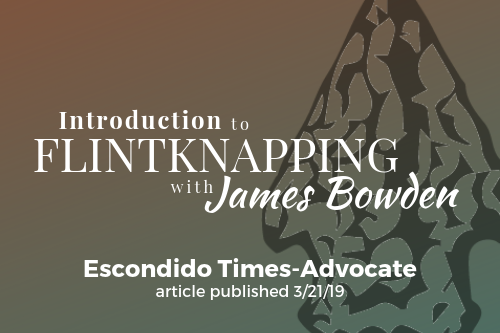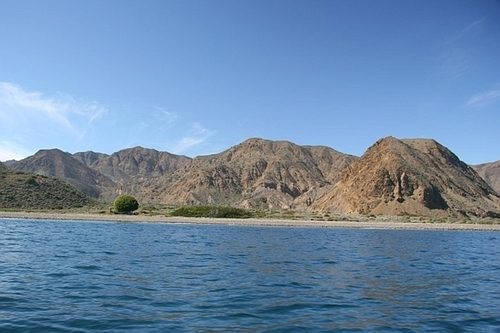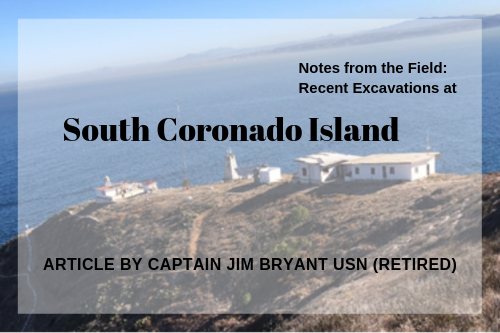
Article on South Coronado Island Excavations
Antonio Porcayo of the National Institute of Anthropology and History (INAH) of Mexico invited me to join this expedition sponsored by Dr. Todd Braje using funds from the California Academy of Sciences. I’m a volunteer at the San Diego Archeological Center and with the Colorado Desert Archeological Society supporting California State Parks. Joe McCain, who recently earned a MA in Archaeology from San Diego State University, was the Co-Principle Investigator of this expedition. McCain worked with Porcayo in 2016 doing surveys and surface collection of artifacts on the islands.
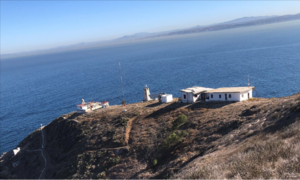
The 2018 expedition included excavation at caves on the east side of the North Island and South Island and on the ridge to the west of the Mexican Naval Station on the South Island. These islands have many mysteries, and this expedition discovered more. How did a large number of Kumeyaay live on the islands and how did they harvest the surrounding waters teeming with sea life?
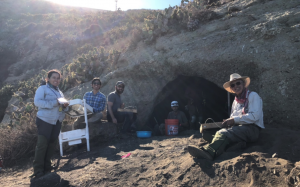
I screened for artifacts and bone at the cave on an east facing cliff that is several hundred yards to the south of the Mexican Naval Station. A one by one-half meter unit was dug to 100-centimeter below datum inside the cave, and another on the apron in front of the cave to about 90 centimeters below datum. Bedrock was reached outside, but not inside the cave.
Contrary to what we experienced on the Coronados Islands, Dr. Tim Gross, who taught my “dig” and artifact analysis classes at San Diego City College, found no bioturbation from borrowing rodents, leaving the strata perfectly intact on San Clemente Island. Coronados Islands have rodents that turn over earth, making historic artifacts like metal and glass show up deep in the cave deposit. Damp soil appeared at the 90-100-centimeter level in the cave. There is no permanent water source on the surface. If damp soil could be found in October, many months since the last rain, is it possible there could be a reservoir of fresh water reachable by a deep hole somewhere on the island?
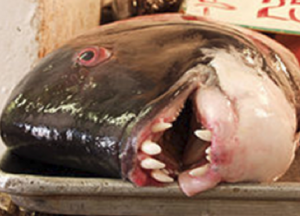
We collected a large amount of fish bones and vertebra; a large percentage were teeth and mandibles from a bottom fish called a California Sheepshead (Semicossyphus pulcher). I was surprised by the small size of the Sheepshead they were eating. Sheepshead are not easily caught by nets as they live on rocky bottoms and eat shellfish and sea urchins, but we found no trace of hooks or their manufacture. We found Seal/Sea Lion bones andand teeth, an Otter Skull and rib bones from large mammals. The 2016 expedition found bones on the surface identified as deer.
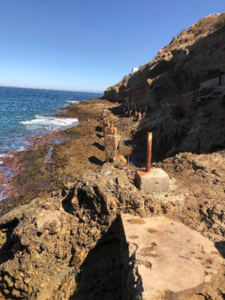
Abalone shells are numerous from the surface to several levels below in and around the cave and the ridge above the cave on the South Island. Some very small Abalone shells about the size of your thumb were noticed. A similar excavation in the cave on the east side of the North Coronados Island found only limpet shells. I also found some small barnacles. Small abalones and barnacles could be used to make soup, which could suggest starvation conditions for the Kumeyaay hiding on the islands to avoid Spanish oppression. The previous trip to the islands in 2016 found some native pottery sherds on the surface in front of the cave on the South Island that could been from pots capable of making soup.
Since this cave is close to the Casino/Hotel that was on the island in the early 1930s it could have been looted, but we didn’t find even broken fragments of points or hooks used to harvest sea mammals.and fish. The screened material was checked carefully to collect all the bones and a point fragment should have been detected. The Abalone shells I saw showed no signs of being modified in the process of making hooks.
The lithics found were made from metavolcanic and quartz cobbles from deposits on the island. Examples shown below were found on the surface on various parts of the island.
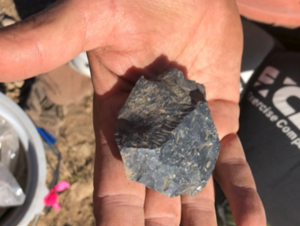
The large number of lithic artifacts found on the surface, the presence of hearths that went down several feet, and the areas of anthropogenic loam suggest there was a large Kumeyaay presence on these islands. Excavations unearthed thick layers of shells, bones (mostly fish), but also mammals, including seals/sea lions/otters. The Kumeyaay harvested fish and sea mammals, but since we found no points, fish hooks, harpoons or fishnet weights there is a mystery on how it was done. Another mystery is there is abundant evidence of long term, and at least seasonal habitation by the Kumeyaay, but no year-round source of water to support it.
To hear more about this project, please join the SDAC for a presentation on Archaeological Investigations and Reconnaissance of the Coronados Islands.


